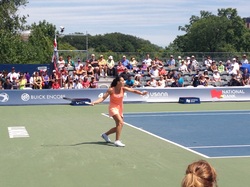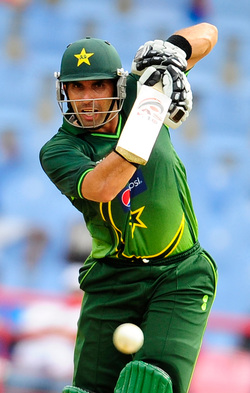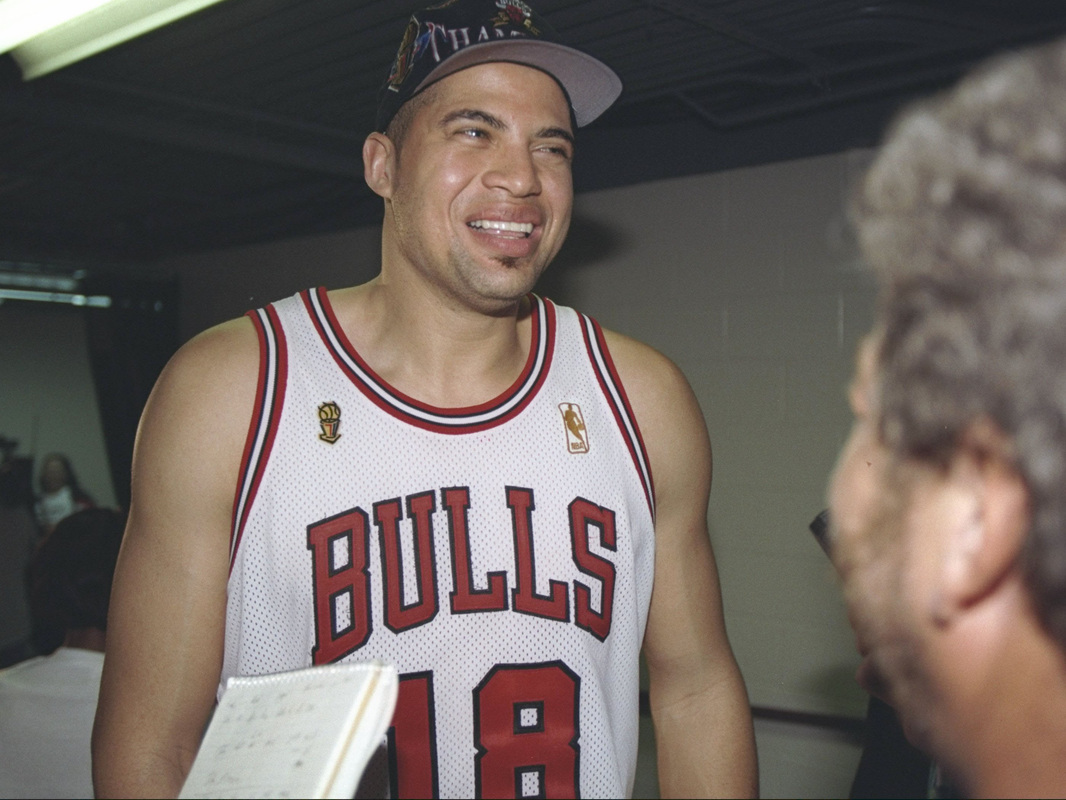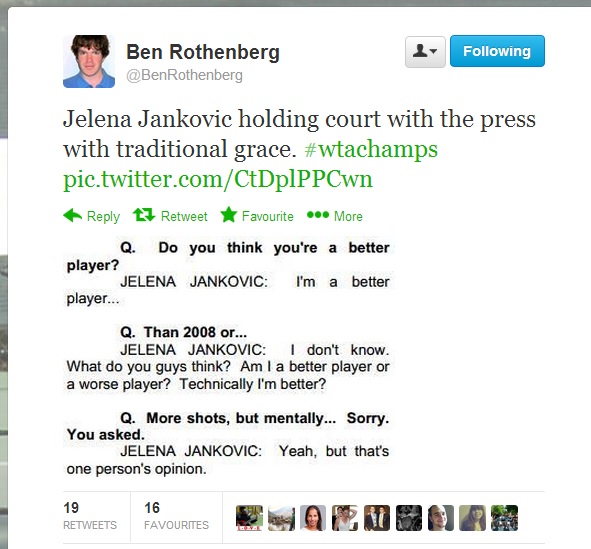|
When I came across this story, I knew the name Bison Dele seemed familiar. But, it was not until I saw a picture of Brian Williams in his NBA uniform that everything clicked. Bison Dele, once known as Brian Williams, left the NBA behind to explore the world. His quest carried him to a mysterious end near Tahiti. More than a decade later, his spirit sails on - Chris Ballard, Sports Illustrated. The Dele/Williams tale was hopeful and unconventional, yet ultimately sad and tragic. It contains many layers which allow for great reflection on the complexities of life. Chris Ballard's piece is a compelling example of long form sport writing - a genre that is greatly neglected in this digital age which privileges speed and brevity. I remember watching Williams play, thinking he was a bit awkward and less physical than the typical big man in the league. The truth is, like most NBA centers, he just took a bit longer to develop. He was just beginning to come into his own when he left the league, and the remaining $36 million on his contract. As a society, we are conditioned to think of professional athletes as the lucky ones - able to make a living out of a hobby, doing what they love. Dele bucked that notion in walking away from a lucrative contract to pursue an unknown life. He was an intellectual who was curious about the world, and yearned for something more than the bright lights of the NBA. His story strikes a chord with me as I embark on my post-education life, trying to carve out a professional niche. His choice to leave the NBA and live his life as he wanted underscores the need to make the most of the time that we have at our disposal. What do we want from life? What are the insurmountable obstacles that we perceive as prohibitive toward that end? He travelled the world. He fell in love. He did the things that were not expected of him, things that went against the expectations for someone in his position. It's a decision that I admire and one that we should celebrate when looking back on his life. We will never know if he found all that he was looking for, or if he was happy in the end. The catastrophe surrounding his death shrouds the optimism and fervour with which he lived his life. He escaped the trappings of celebrity living and embarked on a path less travelled - one we should all aspire to in our own unique ways. Bison Dele is the focus of my writing, but let us not forget all the people who were affected by this travesty. Many lives were torn apart by what transpired 11 years ago. I am not inclined to speculate or opine on the specifics of the so-called "mystery". Engage with all that in your own way. For more on what happened, check out the story as represented on the "Disappeared" series. It features awful re-enactments, but also has interviews with some of the parties involved. It makes for a good accompaniment to the SI story.
0 Comments
 Personal photo collection: Rogers Cup 2013 Personal photo collection: Rogers Cup 2013 Jelena Jankovic is one of a handful of players who have ascended to #1 in the world only to suffer through a prolonged slump in subsequent years. Dinara Safina is likely retired after a debilitating injury. Ana Ivanovic is gamely working to recapture some of the form that brought her French Open glory. Meanwhile, Caroline Wozniacki is the newest face of the underachieving #1.
Thankfully, Jelena seems to have turned the tide in her favour once more. After some promising results in 2013, she’s now beaten Victoria Azarenka in her opening match at the WTA Championships. Although Victoria claims fatigue, the 6-4 6-3 win over the world #2 is still a mightily impressive result for the resurgent Serb. I am positive the WTA is better with Jankovic near the top of the game. She brings a flare and quirkiness that is often missing with some of the top players. She’s also very funny. Case in point:  Photo via AFP Photo via AFP Misbah-ul-Haq’s is unmistakably Pakistan’s most indispensable cricketer. The 39-year-old captain’s story is at once improbable and remarkable. After debuting in 2001 days shy of his 27th birthday, he struggled to find a regular place in the team for the next six years. Against conventional wisdom, Misbah was plucked from the dust heap to lead Pakistan cricket into the post-match fixing era. Now he is the team’s leading batsman at age 39 - ranked 7th in Tests and 8th in ODIs. How has this come to be? Misbah boasts a measly 4 international hundreds, all in Test cricket. A player with such a dearth of big scores doesn’t often conjure greatness, but Misbah’s worth can only be fully assessed by looking beyond the numbers. Most importantly, he is Pakistan’s rock. As captain, he has presided over a period of intense turmoil after the match-fixing scandal of 2010, and led the team to surprisingly good results (the loss to Zimbabwe notwithstanding). The hundreds haven’t been forthcoming, but his steady fifties have often been the glue that held many an innings together. One of the knocks against Misbah has been his slow scoring. Thus, his record in ODIs is quite the revelation - scoring 31 fifties at a respectable strike rate of 73.59. Not only has he scored runs with an enviable consistency, but somehow he seems to be getting better with age. In 2013, he leads all ODI run-getters with 961, amassing 11 fifties at an average just north of 60. Where would Pakistan’s batting be without Misbah as the rock? How much longer can he perform at this level? What does it mean for Pakistan cricket to rely so heavily on a batsman who is - to put it crudely - so old? These questions will hover over Pakistan cricket as long as Misbah features heavily in the team’s set-up. Still, he doesn’t seem to be slowing down any time soon. After Pakistan suffered a shock defeat to Zimbabwe last month, the team rebounded to demolish South Africa inside of four days - a match in which Misbah’s contributions were crucial. Earlier this year, Misbah was referenced on the U.S. cable drama “The Newsroom” - pretty cool for a guy that was once an afterthought. Now he is Pakistan’s rock and saviour, deservedly so.  Photo credit: AP/Bill Haber Photo credit: AP/Bill Haber The Washington Redskins and owner, Dan Snyder, have come under heavy criticism for their staunch resistance to changing the team’s name amidst backlash that the name is offensive to Native Americans. This is not a new problem for sport franchises. The Cleveland Indians feature a caricature of a smiling Indian as its logo, the Atlanta Braves encourage fans to wave a tomahawk in unison as a rallying mechanism, and hockey has the Chicago Blackhawks. However, the Washington Redskins is a larger target of criticism as the team name (Redskins) is a racial slur that has a history of oppression attached to it. President Obama has recently said he would consider changing the name if he were owner. The NFL plans to meet with an Indian tribe to discuss the matter. Yet, Dan Snyder and the Redskins are not having it. Earlier this year he proclaimed: We’ll never change the name. It’s simple. NEVER — you can use caps. However, in the face of increasing opposition, Snyder drafted a letter to Washington season ticket holders in which he softened his stance - making the case that the team name is part of a storied history in American culture, one that should be celebrated: We cannot ignore our 81-year history, or the strong feelings of most of our fans as well as Native Americans throughout the country. After 81 years, the team name “Redskins” continues to hold the memories and meaning of where we came from, who we are, and who we want to be in the years to come. In a curious yet clearly calculated choice of words, Snyder refers to his team’s fans as “Redskins Nation” - conjuring Native reservations in attempting to link the histories of his team with that of Native Americans. If the name is accepted by Native Americans as part of the American and football fabric, then how can it be problematic?
43-year old Kimiko Date-Krumm is currently the 54th best women’s tennis player in the world - ranked higher than Heather Watson, Yanina Wickmayer, and Julia Goerges - players all born after her first year on tour in 1988.
Kimiko Date was one of the first players I rooted for in tennis. In a sport dominated by women who all looked alike, I gravitated toward the diminutive Japanese underdog, a solid top-10 player, but one who was never able to break through in the big moments against the top ballers. She retired 4 days shy of her 26th birthday in 1996, having reached 3 Slam quarter-finals and 3 semi-finals. Hers was a pioneering career for Japanese tennis and a perfectly respectable one overall, having reached a career high ranking of #4 in 1995. Fast-forward 12 years and I discover that there’s a Kimiko Date-Krumm playing on the outskirts of the tennis circuit. The first thing that came to mind was this had to be a hyphenated offspring of the Kimiko I once loved. Incredulously, this was the same Kimiko. Having spent 12 years off the tour, gotten married to a German race-car driver - she was making an unprecedented return to the sport in which she was once a top player more than a decade before. The second coming of Kimiko Date hasn’t been nearly as successful. The game is different now. Players are hybrid versions of the ones she first competed against - more powerful, and the greater depth on tour means any of the top women can fall on any given day. Still, 5 years after her return, Date-Krumm finds herself ranked high enough to gain direct entry into Grand Slams. At 43, Date-Krumm is a full 10 years older than the next oldest players ranked inside the top-100, Venus Williams and Francesca Schiavone. Born in 1970, Kimiko is the only player born in the 70s ranked inside the top-100. While it is true that the game is no longer the domain of teen prodigies and players take much longer to develop now than in the 90s, Date-Krumm’s achievement is still jaw-dropping. |
ARCHIVES
September 2022
|


 RSS Feed
RSS Feed